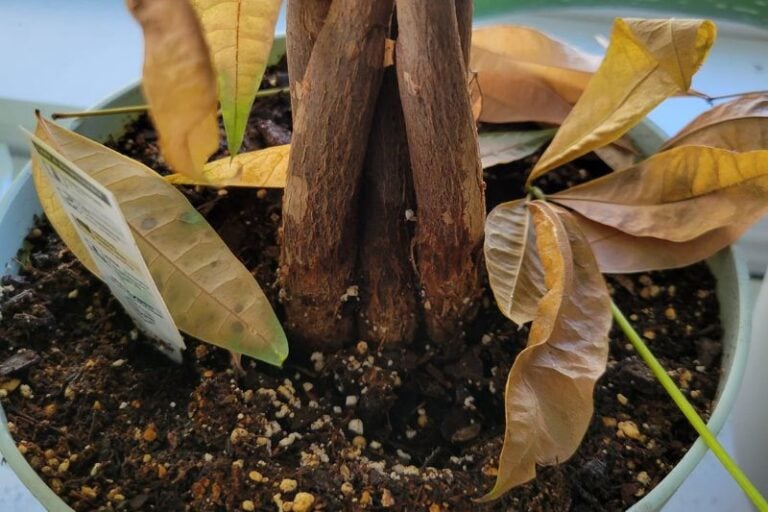So you’re growing Aglaonema, and you notice it’s starting to bud. If you’re a beginner, you might be wondering, “Okay, it’s budding, but what do I do now?”
That’s why in this article, we’ll go through what to do when those flower buds appear, especially if you’re new to Aglaonema.
Contents
Signs Your Aglaonema Is About to Bud
Before your Aglaonema actually starts budding, it’ll give you some signs. Usually, the leaves it unfolds will be slightly smaller than the leaves it’s been producing before (although sometimes they may look the same size).

If you find yourself asking, “Hey, why are these leaves smaller than the ones before? What’s going on?”, that’s likely a sign that your plant is about to start budding.
Typically, you’ll see about 1 to 3 buds appear. From my own experience and what I’ve seen on social media buds are most likely to pop up between June and July.
When your Aglaonema starts to sprout flower buds, you’ve got two main options. You can either remove the bud or consider cross-pollination if you have another plant that’s also about to flower.
To Remove or Not
If you’re not planning to pollinate, it’s a good idea to snip off the flower bud. Aglaonema plants tend to use up a lot of energy for flowering, which can lead to leaves yellowing and sometimes even stem rot. Simply twist off the flower bud at its base to remove it.
Pollination Time
If you have two or more Aglaonemas that are about to flower at the same time, you can aim for cross-pollination. The male flower will release pollen around three days after blooming.

Use a paintbrush or cotton swab to transfer the pollen to the stigma of a female flower. It takes about six months for the seeds to form.
1- Cover Blooming Flowers
Once the flower blooms, cover it with a bag. By doing so, you can maintain the humidity around the flower, keep track of when the pollen will be released, and prevent the pollen from falling unnoticed.
Don’t get your hopes up too much just because the flower has bloomed; sometimes, the pollen might not release at all.
2- Watch for Moisture
About 12 hours before the pollen releases, you’ll see moisture emitted from the stamen. Think of this as a sign that the pollen will be flying soon.
When that happens, use a brush or cotton swab to collect the airborne pollen and apply it to the stigma of the female plant. If your timing is right, this will result in pollination.
As a side note, I’ve tried both brushes and cotton swabs. Personally, I found brushes to be far easier to use.
Can Aglaonema pollen be stored? If possible, for how long?
Yes, you can store Aglaonema flower pollen, and it’s generally believed to remain viable for about three days.
I’ve had a few experiences where I applied the pollen to a stigma that wasn’t fully mature, covered it with a bag, and found out later that it had successfully pollinated.
Key to Successful Pollination
Even if the stigma isn’t fully yellow, go ahead and apply the pollen. By doing this, the pollen that’s still viable during that time might just result in successful pollination before you know it.
Caution
Make sure the female plant is in good health. Flowering takes a toll on the plant, and some leaves might turn yellow. So, a weak plant might even rot.
Harvesting Seeds
Once pollination is successful, the seed will mature in about six months, changing from green to yellow to red.
Red signals it’s time to harvest. Remove the fruit flesh, and plant the seed in either soil or sphagnum moss.
From my experience, sphagnum moss has given me a germination rate of about 70-80% (4 out of 6 seeds, 8 out of 10 seeds).
Summary
If you’re not looking to cross-pollinate, or if your plants’ timing doesn’t match, remove the flower bud to keep your plant healthy.
But if the stars align and you have multiple plants flowering, go ahead and try your hand at cross-pollination. You might just end up with a unique, new plant!






